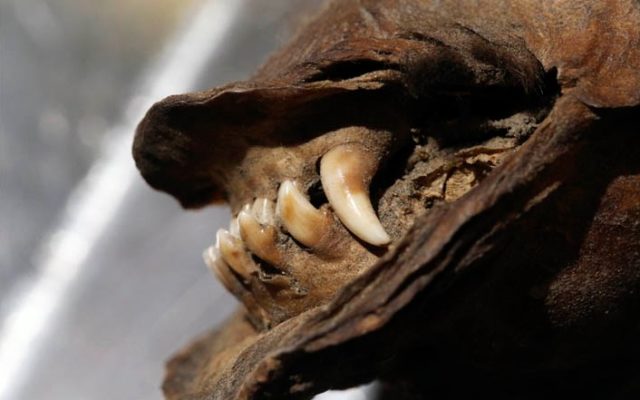Archaeologists have officially discovered a mostly preserved puppy that was alive up to one hundred and twenty centuries ago.
The little pup was uncovered 8 meters away from another dog that was found in 2011. Scholars believe the two canines were brothers born in the same batch of puppies. It is believed the dogs were buried by a landslide or during a burrow collapse in Russia’s jaw-dropping Sakha Republic.
The first dog to be discovered was named Tumat. The dog quickly became famous around the world and was rejoiced by scientists and other scholars because the little dog was preserved perfectly.
It was so incredibly untouched by time was that the animal experts even uncovered what is now known as the “Puppy’s Last Supper”.
Yeah, you guessed it! The dog’s last meal was preserved, giving scholars a big advancement on their knowledge of the ecosystem and animal domestication at that time.
Earlier in the year, the dog named Tumat was examined, according to the news agency Siberian Times. The most interesting part about the observations was the fact that it was the world’s first of it’s kind.
It was discovered that the tissues were mummified exceptionally well and that there was practically no decomposition, which typically occurs with materials that are biological in nature.
The observers discovered that a lot of the animal’s organs were preserved, leaving historians with complete access to the dog’s life and habitat. It’s been said that Tumat’s tummy was very well intact that when it was opened, the preservation recovery surgery found two pieces of twigs in his system.

This led to the discovery of how the puppy meets his demise over twelve thousand years ago. It is speculated that as the landslide occurred, the dog worriedly tried to bite on a tree as the landslide pulled him down. A more advanced examination by scientists is right around the corner. Luckily, Tohoku University scored access to tissue samples from the find and are conducting tests.
The leader of Tumat’s analysis did discover a crucial link for domestication. The puppy was found close to human artifacts such as stones and even arrow heads made of bones. This discovery has the team planning another try at doing a ground-breaking excavation.
For four years after scholars analyzed Tumat’s remains, the dog was kept in a freezer to help keep it preserved before a post-mortem was performed, so the information about the every day life of Tumat is just emerging.
The canine was found in Tumat by its residents and was donated to the mammoth museum. The person in charge of the exhibitions throughout the museums said that remains were a wonderful addition.
The puppy that is now known as “Tumat’s brother” is called Pleistocene. The reason behind the nickname was that the puppy lived during that era that ended around 12,000 years ago.
Archaeologists said that the little puppy has successfully been excavated and that laboratories were about to analyze the new dog. The main goal of the study is to help map out the ancestry and history of the domestication of the dog.
The scholars are trying to discover which one of the two main theories is correct about this puppy’s encounters with the man. The first idea is that dogs became scavengers that co-existed with the man because of their kindness and likeability.
The second theory is that humans lured the dogs into the good life because of the assets they brought to the table combined, with their wonderful companionship. It’s been said that the study indicates that the latter theory is more likely due to the puppy’s health and diet.